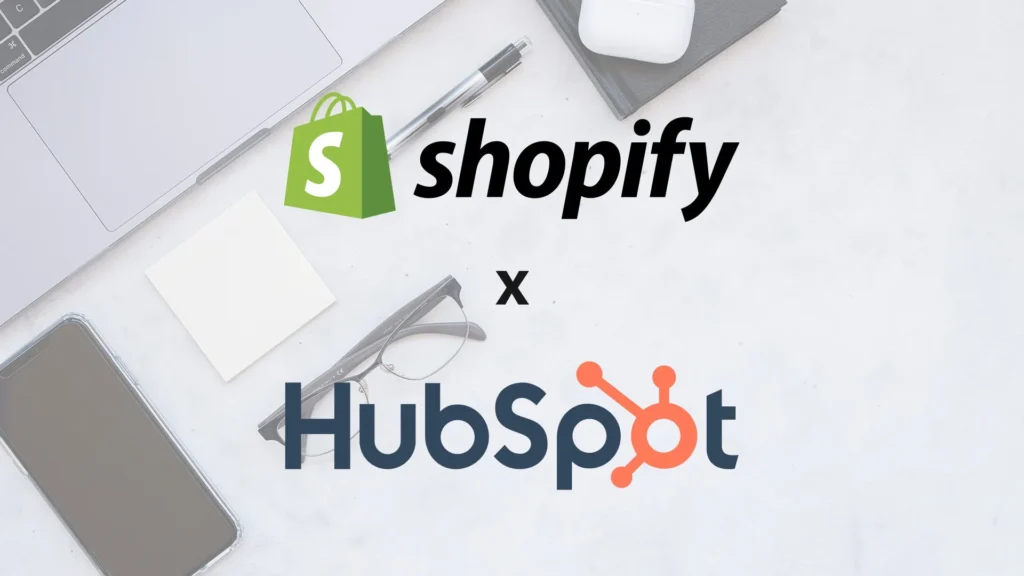Understanding the Integration of HubSpot Shopify
The integration of HubSpot Shopify connects the Shopify e-commerce platform with HubSpot’s CRM and marketing automation tools, creating a unified system where customer data, purchase behavior, and communication are all synced in real time. Every action taken by a customer on a Shopify store, from browsing products to completing purchases, becomes trackable within HubSpot’s interface. This data gives marketing and sales teams the ability to respond with precise, behavior-driven strategies designed to nurture customer relationships and encourage repeat purchases. With the integration fully enabled, both platforms function as one cohesive engine driving e-commerce growth.
Customer Data Centralization for Repeat Sales Strategy
The integration of HubSpot Shopify brings customer activity from the storefront directly into HubSpot, providing a complete view of each contact’s interactions, orders, preferences, and lifetime value. This data enables precise segmentation, allowing businesses to categorize customers into groups such as one-time buyers, frequent shoppers, or high-value customers. By targeting these segments with personalized incentives, businesses can increase the likelihood of repeat sales. For example, a customer who purchased a skincare item can automatically receive emails with refill reminders, bundles, or complementary products without any manual data entry.
Behavior-Triggered Workflows That Drive Second Purchases
Automated workflows in HubSpot are critical for converting one-time buyers into repeat customers. With the integration of HubSpot Shopify, businesses can build workflows that respond to customer behavior—like sending a discount code 10 days after a purchase or a review request that includes a limited-time offer. These automated follow-ups maintain contact with the customer and provide a reason to return. Timed engagement increases the odds of re-engagement, especially when the messaging is directly tied to the customer’s shopping history. Businesses can also A/B test these workflows to refine timing, incentives, and content for higher success rates.
Personalized Email Campaigns That Feel Human
Personalized communication is a powerful tool for driving repeat sales, and HubSpot’s email tools make this seamless. Using data pulled from Shopify, such as the products purchased, total amount spent, or category preferences, marketers can send emails that reflect exactly what the customer cares about. An email saying, “We noticed you loved the summer linen collection—here’s 20% off your next order” feels more genuine and effective than a generic promotion. Because all engagement is logged in HubSpot, future campaigns can build on past interactions to improve results with every send.
Loyalty and VIP Programs Managed Through Integration
Businesses can use the integration of HubSpot Shopify to run loyalty and VIP programs that increase customer retention. By tracking purchase frequency and order value, HubSpot can automatically enroll customers into segmented lists and send exclusive rewards based on tier. For example, customers who have placed three or more orders can receive an automated thank-you email with early access to sales. Higher-value customers can receive special birthday discounts or sneak peeks at new collections. By making these processes automatic, businesses ensure consistent engagement without additional workload.
Replenishment Reminders That Encourage Recurring Orders
For businesses that sell consumables or subscription-based products, replenishment emails are essential. The integration of HubSpot Shopify makes it easy to send timed reminders when a customer’s supply is likely running low. These reminders can be based on average usage data or tied directly to product type. A customer who ordered protein powder in April might receive an automated nudge in May offering 10% off their next bag. When customers feel that a brand understands their needs and timing, they are more likely to return without shopping around.
Cart Abandonment Follow-Ups That Convert
Cart abandonment is a major challenge in e-commerce, but the integration of HubSpot Shopify allows businesses to follow up automatically and effectively. When a customer leaves items in their cart, HubSpot triggers an email sequence reminding them to complete their order. These follow-ups can include incentives like limited-time discounts or back-in-stock alerts. More importantly, they can be personalized using the items the customer viewed or added to the cart. Businesses that optimize these flows see higher recovery rates and improved customer retention over time.
Post-Purchase Engagement That Builds Long-Term Value
Once a sale is made, the relationship with the customer should not end. HubSpot’s automation tools allow for immediate post-purchase follow-ups, such as order confirmations, shipping updates, and satisfaction surveys. A few days later, customers can receive product care tips, how-to videos, or usage guides that increase product satisfaction. The integration of HubSpot Shopify ensures all of these messages are tied to the original order and the customer’s lifecycle stage. This keeps the brand top of mind and positions the business as helpful, not just transactional.
Product Recommendations Based on Purchase History
HubSpot can analyze past Shopify orders and suggest similar or complementary products using smart content blocks in emails or on landing pages. Someone who bought running shoes might be shown running socks or fitness accessories. These recommendations are dynamic and change as customer behavior evolves. By offering relevant suggestions instead of random products, businesses improve click-through and conversion rates. The integration enables this without manual intervention—recommendations are generated and delivered automatically based on behavior.
Customer Feedback and Review Requests That Close the Loop
After a purchase, HubSpot can automatically send messages requesting feedback or reviews. These can include incentives like future discounts or loyalty points. Not only do reviews improve social proof and SEO, but the act of asking also makes customers feel valued. The integration of HubSpot Shopify tracks which contacts received the request, who responded, and what actions were taken afterward. If a customer gives a high rating, a follow-up can offer a referral discount. If the review is negative, it can trigger a support ticket in HubSpot Service Hub for quick resolution.
What to Remember When Using HubSpot Shopify Integration
Ensure that customer data is clean and correctly mapped between both platforms before launching workflows. Avoid syncing errors by testing integration settings, especially when using third-party connectors. When building workflows and email sequences, make sure messages feel personal, not robotic. Use customer names, relevant products, and time-sensitive offers that reflect the recipient’s history.
Monitor performance constantly using HubSpot’s analytics dashboards. Identify which workflows are driving repeat sales, which emails get the most clicks, and where customers drop off. Optimization is an ongoing process—continual testing and refining deliver the best long-term results. Keep both platforms updated with new features, and always audit how data flows between them to prevent breakdowns.
Businesses that approach the integration of HubSpot Shopify with strategy and precision see measurable increases in customer retention, average order value, and long-term loyalty. With automation, personalization, and data all working together, turning one-time buyers into loyal customers becomes a predictable, scalable process.











